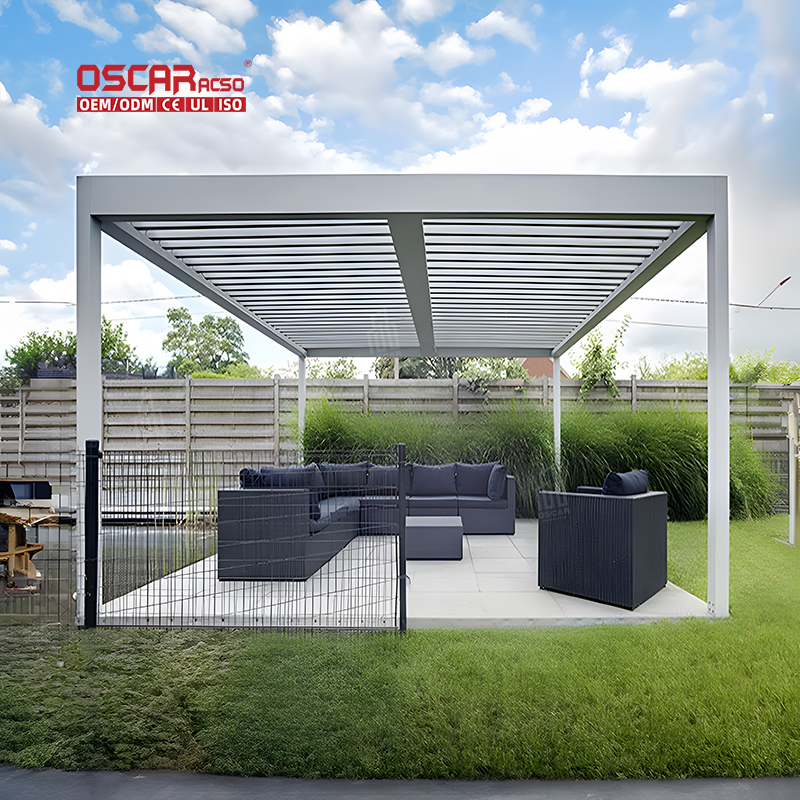Pergola Invention Era, Unveiling Its Ancient Garden Mystique
The pergola, an iconic garden structure, boasts a history stretching back over three millennia 🌍. Its invention ...
The пергола, an iconic garden structure, boasts a history stretching back over three millennia 🌍. Its invention isn’t credited to a single individual but evolved from practical needs in ancient civilizations, primarily for providing shade and supporting climbing plants.
.jpg)
🏛️ Traces in Ancient Egypt
The earliest known pergolas appeared in Ancient Egypt around 1400 BC. These structures were found in the gardens of high court officials, serving as status symbols and providing much-needed green shade in the scorching climate. Constructed from sandstone and wood, they were integral to classic gardens, creating oasis-like settings for social gatherings .
🏺 Roman Refinements and Expansion
The Romans significantly advanced pergola design. They incorporated wrought iron for durability and aesthetic appeal, moving beyond wood. Roman aristocrats favored elaborate designs adorned with climbing grape vines, enhancing outdoor living spaces and enabling al fresco dining in comfort. This blend of functionality and style helped spread pergolas across Europe .
- •
Material Innovation: Introduction of wrought iron for sturdier structures.
- •
Cultural Integration: Became central to luxurious outdoor living and viticulture.
- •
Architectural Influence: Their designs influenced future European garden aesthetics.
🌸 Pergolas Through the Ages
Pergolas continued to evolve through different historical periods:
- •
Renaissance Italy: Pergolas became prominent features in gardens, often made from brick, stone, or wood. They were adorned with climbing plants, creating cool retreats and beautiful walkways. Sites like the pergola at Trinita dei Monti in Rome exemplified Italian elegance .

- •
19th Century Naturalism: The trend towards naturalistic gardening embraced pergolas as supports for climbing vines like roses, jasmine, and wisteria, blending aesthetic appeal with practical use .
- •
Modern Adaptations: Today, pergolas serve as extensions of living spaces. Modern materials and designs, including those using wrought iron, allow them to fit various architectural styles and create functional outdoor rooms for relaxation and entertainment .

🤔 Why Were Pergolas Invented?
The invention of pergolas was driven by practical needs and aesthetic desires:
- •
Shade Provision: Their primary function was to offer relief from the sun, creating comfortable outdoor areas.
- •
Plant Support: They provided ideal structures for vines like grapes, figs, and various flowering plants to grow vertically.
- •
Social Status: In ancient societies, having an elaborate garden with a pergola was a sign of wealth and prestige.
- •
Architectural Enhancement: They added vertical interest and defined outdoor spaces, making gardens more structured and visually appealing.
The pergola’s design, essentially a framework with an open roof, perfectly addressed these needs across cultures and eras.
.jpg)
💡 Beyond the Garden: The Pergola’s Legacy
The term ‘pergola’ even influenced place names. The Italian town of Pergola, one of “The Most Beautiful Villages in Italy,” might derive its name from a pergola that adorned the entrance to the ancient church of Santa Maria della Pergola. This town, with about 7,000 inhabitants, is also renowned for housing the Gilded Bronzes of Cartoceto, the only complete gilded bronze bronze sculptural group from the Roman era discovered worldwide .
Furthermore, the Teatro della Pergola in Florence, a historic opera house built in 1656, takes its name from Via della Pergola, where it’s located. It’s noted as Italy’s oldest opera house built with superimposed tiers of boxes .
The pergola’s journey from ancient Egyptian gardens to modern backyards showcases its enduring appeal. It’s a testament to how a structure designed for shade and support can evolve into a versatile element of outdoor living, blending functionality with beauty across centuries. Its adaptability ensures it remains a beloved feature in gardens worldwide, constantly being reimagined for contemporary lifestyles.



.jpg)
